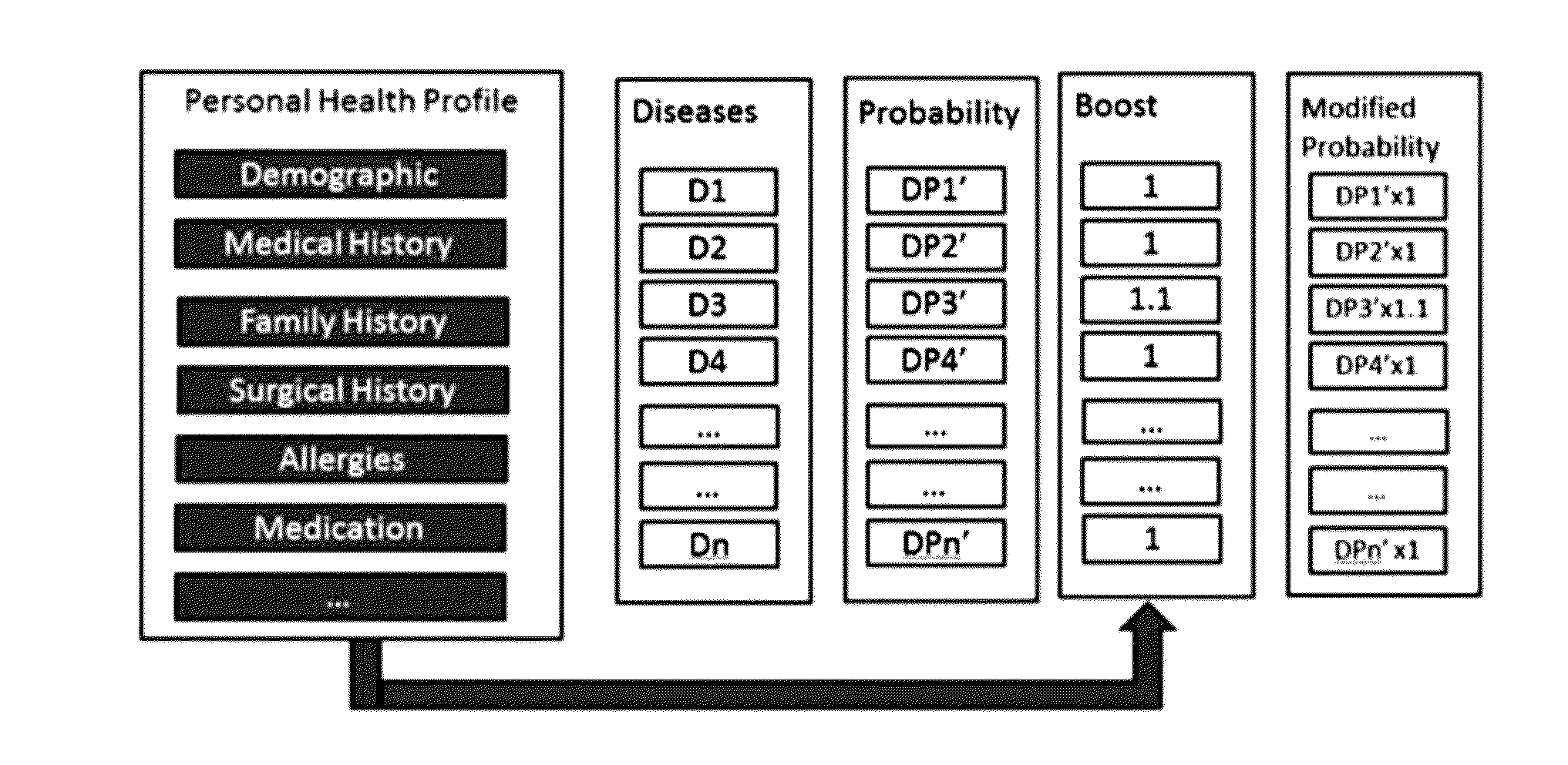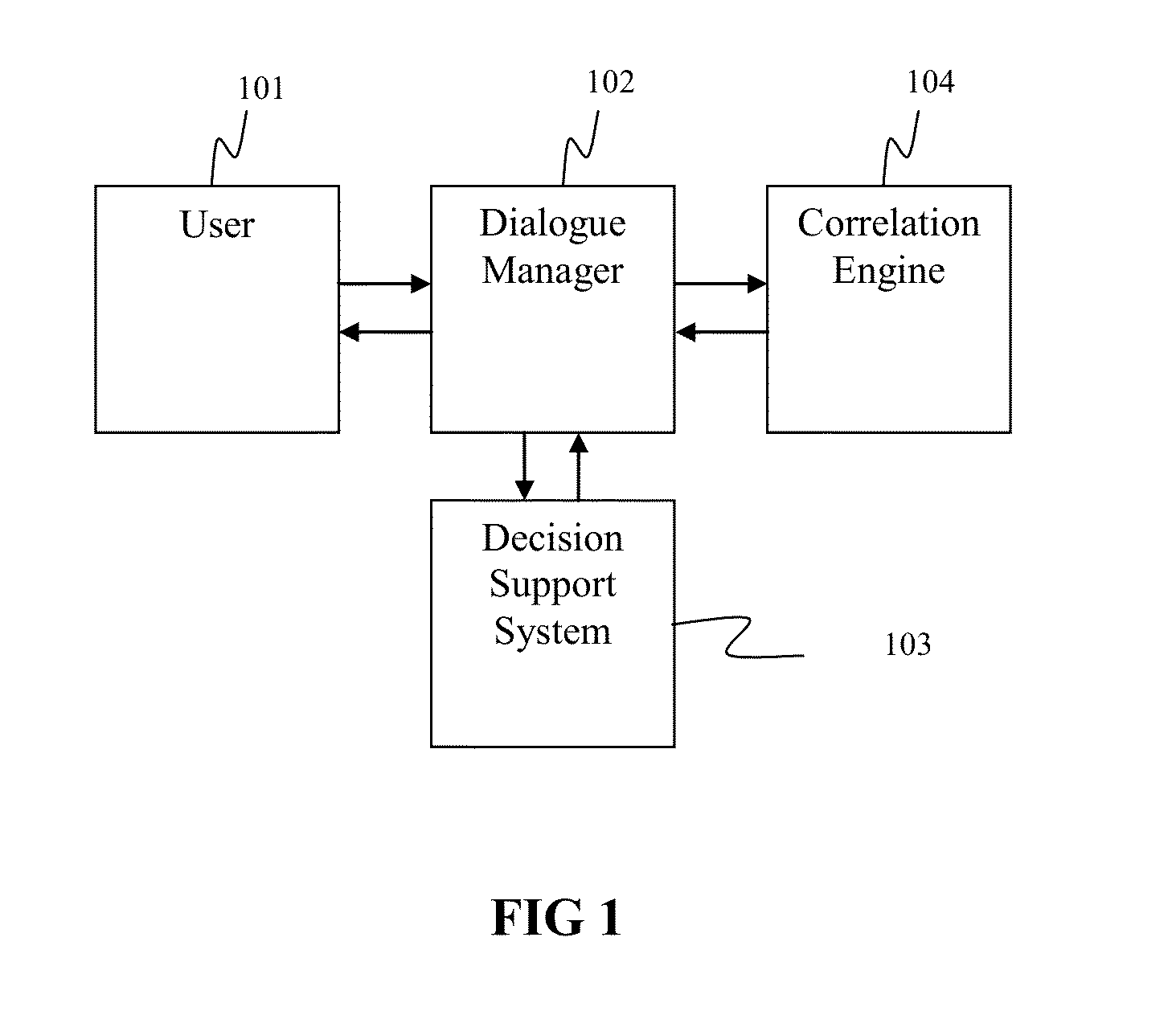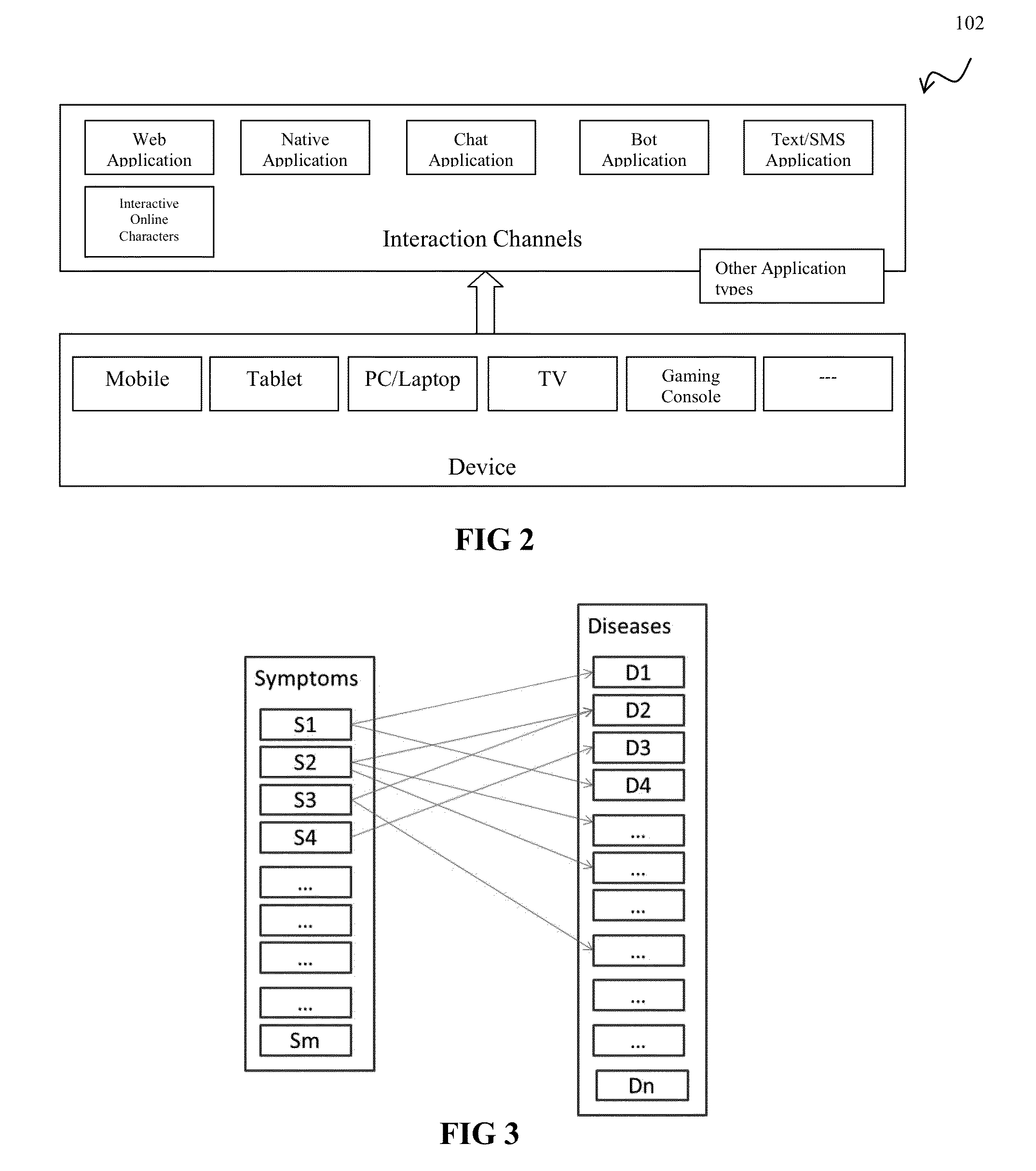System and method for disease diagnosis through iterative discovery of symptoms using matrix based correlation engine
a correlation engine and matrix-based technology, applied in the field of system and method for disease diagnosis through iterative discovery of symptoms using matrix-based correlation engine, can solve the problems of false identification, difficult correlation between disease and symptom, and even more complex human based identification, so as to reduce computation load and processing time, and reduce memory footprint
- Summary
- Abstract
- Description
- Claims
- Application Information
AI Technical Summary
Benefits of technology
Problems solved by technology
Method used
Image
Examples
Embodiment Construction
[0027]The detailed description presents an overview of the present invention followed by a brief description of each of the drawings. Specific examples are set forth in the detailed description part, in order to provide a thorough understanding of the present invention to any person skilled in the art. Embodiments of the invention are illustrated by means of example and figures only to illustrate the concept and not the actual architecture of the implementation.
[0028]One or more embodiments of the invention relate to a iterative software based disease diagnosis system that uses dialog based approach and matrix based correlation engine to diagnose disease accurately based on the initial set of symptoms entered by the user. Key focus of the present invention is the correlation engine that drives the dialogue to ask optimum number of right questions for quick identification of disease.
[0029]In one or more embodiments of the invention, symptom identification starts with a dialog between...
PUM
 Login to View More
Login to View More Abstract
Description
Claims
Application Information
 Login to View More
Login to View More - R&D
- Intellectual Property
- Life Sciences
- Materials
- Tech Scout
- Unparalleled Data Quality
- Higher Quality Content
- 60% Fewer Hallucinations
Browse by: Latest US Patents, China's latest patents, Technical Efficacy Thesaurus, Application Domain, Technology Topic, Popular Technical Reports.
© 2025 PatSnap. All rights reserved.Legal|Privacy policy|Modern Slavery Act Transparency Statement|Sitemap|About US| Contact US: help@patsnap.com



